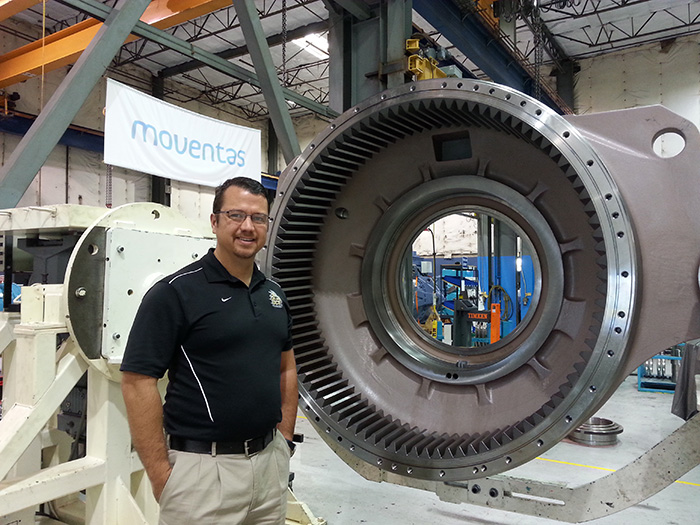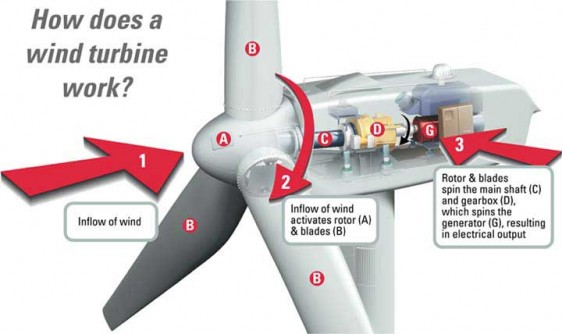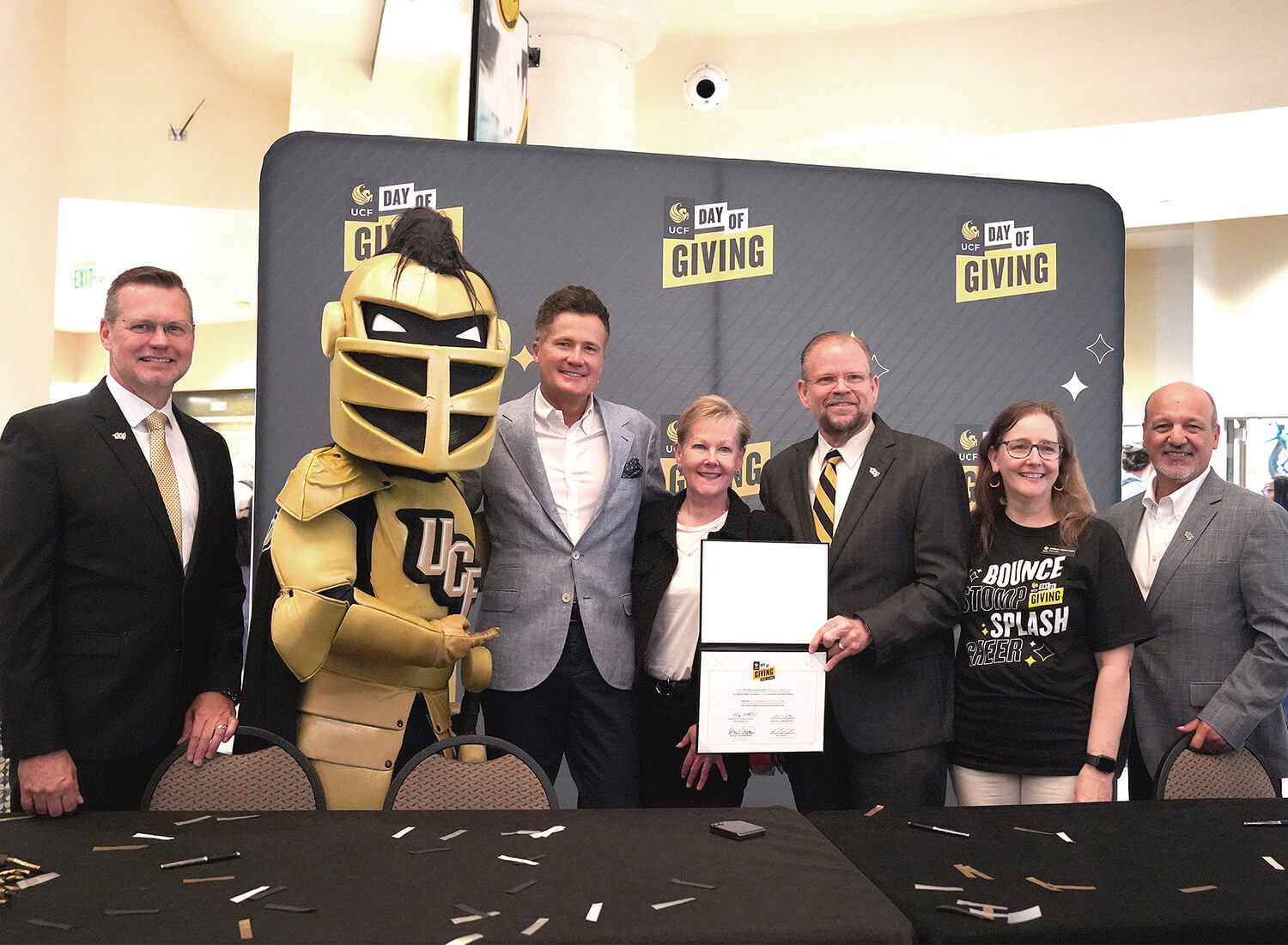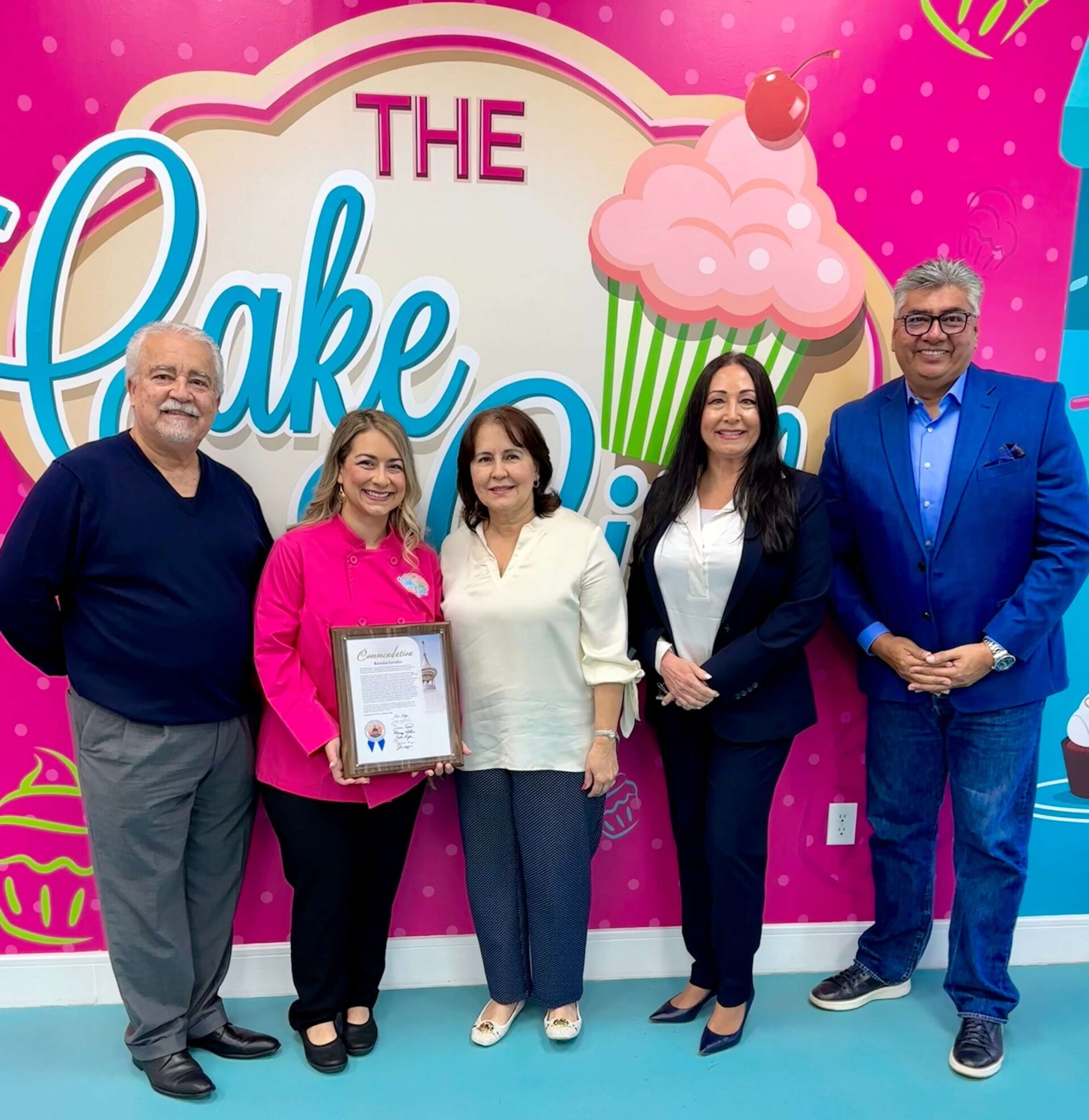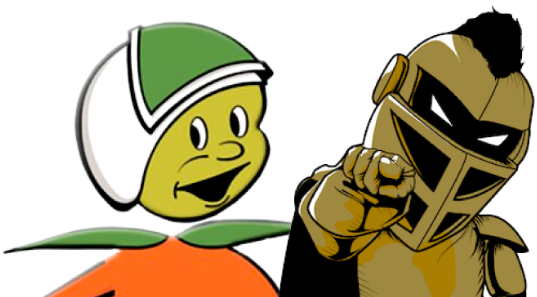Three Blades to the Wind
Engineering alumnus helps harvest natural energy
Michael Hayman, ’03 | Professional Engineer/Project Manager, Moventas
By Angie Lewis, ’03
If you’ve ever driven through Texas, California or Iowa, you’ve probably passed a field of steel towers that look like giant fans. These wind turbines, situated on wind farms, capture the natural wind in our atmosphere and convert it into mechanical energy, then electricity.
“What a lot of people call a fan is the rotor on a wind turbine,” explains Michael Hayman, ’03, professional engineer and project manager for Moventas in Portland, Ore. “These things turn about 14 to 20 rotations per minute, but, a generator, which makes electricity, needs to turn at about 1,000 rpm. So, we make a bunch of gears that turn this from high torque, low rotation to low torque, high rotation. It’s a transmission system, very similar to a car, but it’s just one speed.”
Like most engineers, Hayman showed an inclination toward math and science in school. Working on cars with his dad during his childhood steered him toward an interest in mechanical systems. Although he set his sights on being a pilot for the Air Force or Army, his cataracts prevented him from serving in the military. Instead, he went back to his foundation and pursued a degree in mechanical engineering.
Hayman started his career at the Kennedy Space Center, where he was part of the Return to Flight program after the Columbia disaster, in which he was involved with getting Discovery back up and running. A few years later, knowing the shuttle program would eventually be coming to an end, he sent out his resume, and was contacted by Celerity, a company in Portland that makes machines that make microchips. After a few years working on the design side of engineering, he realized it wasn’t for him, so he once again sent out his resume, and then heard from Vestas, which makes wind turbines. That’s where he discovered a love for wind energy.
Wind technology is important to our future because there are no emissions, Hayman says. “I think that as far as all of the new renewable energies go, wind technology is the most viable right now. A couple of years ago, before fracking really started taking over, about 2008, the price of wind energy was actually less than oil. And, I think we’ll continue to go down that trend, because technology has come along where we’re getting into the megawatt class of electricity, and we can be considered more of a major provider in this niche field.”
Hayman says studies have shown that wind energy could provide about 20 percent of the national power need, whereas, now, it provides less than 1 percent.
So, where can you harvest wind energy? In the U.S., the middle of the country is perfect — the plains region, in particular — because of the constant, steady flow of wind from one direction, Hayman explains. There are many wind farms in the Northeast, but not so many in the Southeast, due to the region’s frequent afternoon thunderstorms, which produce turbulent airflow and would cause a lot of wear on the turbines — and that wouldn’t be profitable.
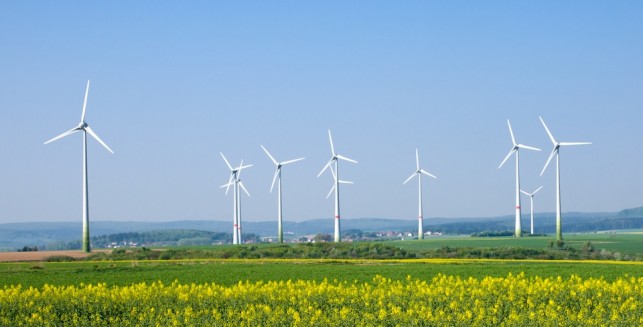
Although the Moventas factory produces gearboxes, as a project manager, Hayman spends most of his time dealing with customer service and problem solving. Compared to some of his previous positions, this position allows him to have a lot of latitude in making decisions and running his department the way he sees fit, which he really enjoys.
“I also take a lot of satisfaction when we implement a program and it works, and we get customer satisfaction out of that,” he says. “I like being able to set ourselves up for success.”
Power Up Q&A
Q. Favorite UCF memory?
A. I don’t know if those are fit to print! I was in the Greek system. I was a Pi Kappa Phi. I was also a senator for three years for the College of Engineering, and I was the finance chairman [for the Student Government Association]. Before I was 21, I had a $6.5 million budget (through SGA). It was all of those experiences, where, for as young as I was, I had a lot of influence for what happened on campus. It felt like I was making a difference on campus. I believe I was finance chairman when we approved George O’Leary’s contract. I was also there when we approved the budget to build the Rec Center, and for the expansion of the Student Union. So, it felt like, hey, we’re doing big things, and that was a point of pride while I was there.
Q. What advice would you give to current UCF engineering students?
A. Don’t be as concerned about your grades. Do as well as you can. There were so many people in that program who were just worried about doing well in class and not really seeking out internships and co-ops or any sort of practical experience. Engineering within school and within the profession are night and day different. While in school, I went out and found an internship for myself. I worked two summers at Tampa Electric Company. I feel like the classroom education is definitely your foundation, and you need to have that, and I got an excellent experience from UCF. But, you need actual, practical, day-to-day experience. Because we were working, our grades probably suffered a little bit, but all of us who did work left college with a job. And, I knew a lot of straight-A students in engineering — which is almost impossible to do — who were left on the bench. If you’re concerned about having a job when you graduate, internships are the way to go.
Q. Any hidden talents?
A. I play the guitar — poorly. When I moved to Portland, I started taking improv classes. I started performing improv and stand-up a few years ago. I haven’t done much recently due to a busy schedule, but it’s something I think I’ll do off and on for a long time.
Q. What’s the wallpaper on your phone and/or computer?
A. The wallpaper on my personal computer is a night launch of the space shuttle. The wallpaper on my phone is my girlfriend and I wine tasting.
Q. What’s your No. 1-most-played song?
A. Comfortably Numb — Pink Floyd
Q. What TV show are you embarrassed to admit watching?
A. It used to be “Fashion Police.” RIP, Joan. I guess now it would be “Deadliest Catch.”
Q. Last book you read?
A. “American Fraternity Man” written by one of my fraternity brothers and UCF Professor, Nathan Holic, ’02
Q. Best thing about living in Portland?
A. So many things are so close. There are more breweries in Portland than anywhere else. An hour south is premium wine country. An hour to the west is the Pacific Ocean. An hour to the east is Mt Hood, great snowboarding in the winter and camping in the summer. An hour to the north is Mt. St. Helens, which is also great hiking. There are a number of farms in the area, so there’s great local produce. And, everyone up here is so friendly.
Q. Favorite childhood toy?
A. Transformers
Q. What/who makes you laugh out loud?
A. I like a number of comedians, but I have to give it to Daniel Tosh, ’96, a UCF alumnus.
